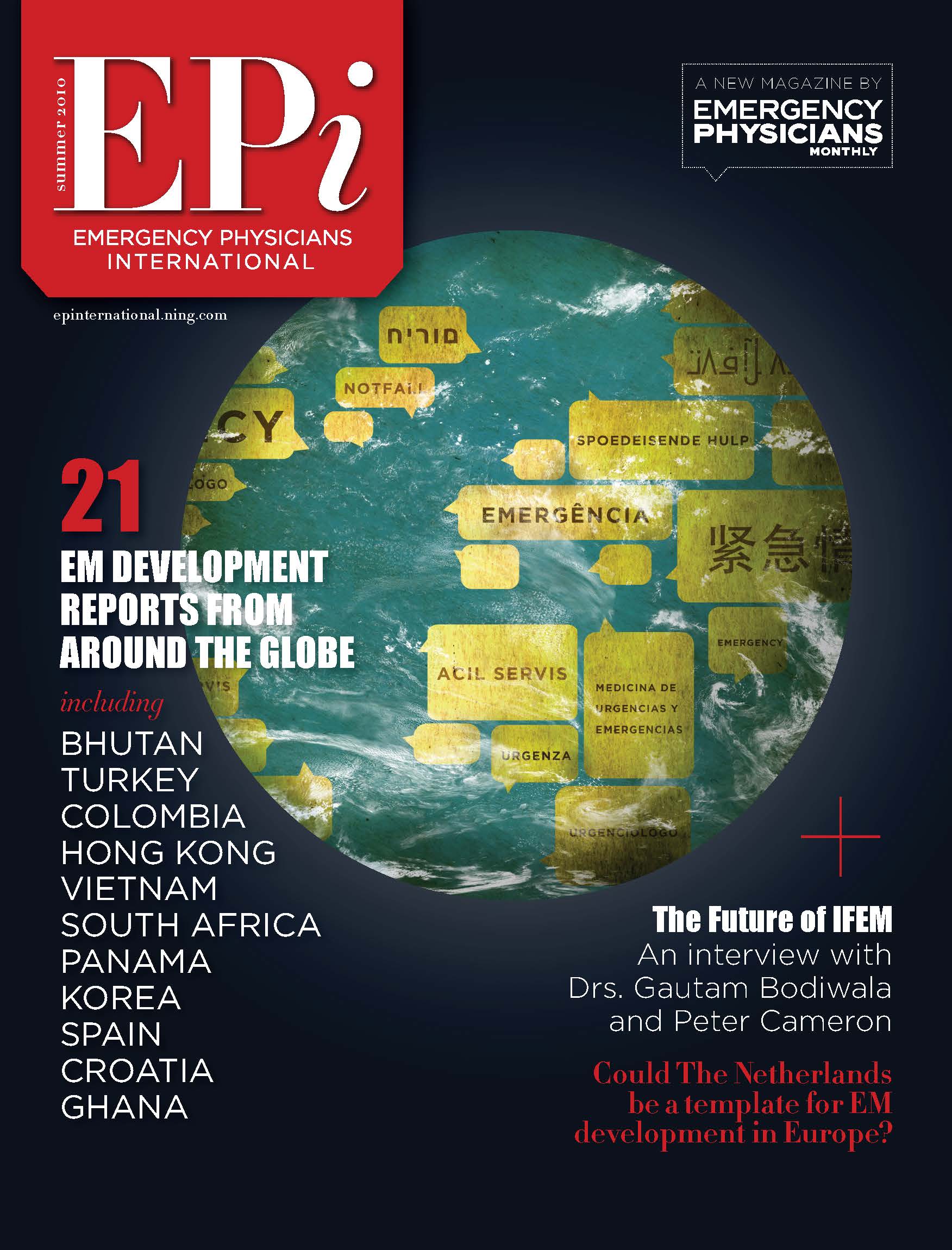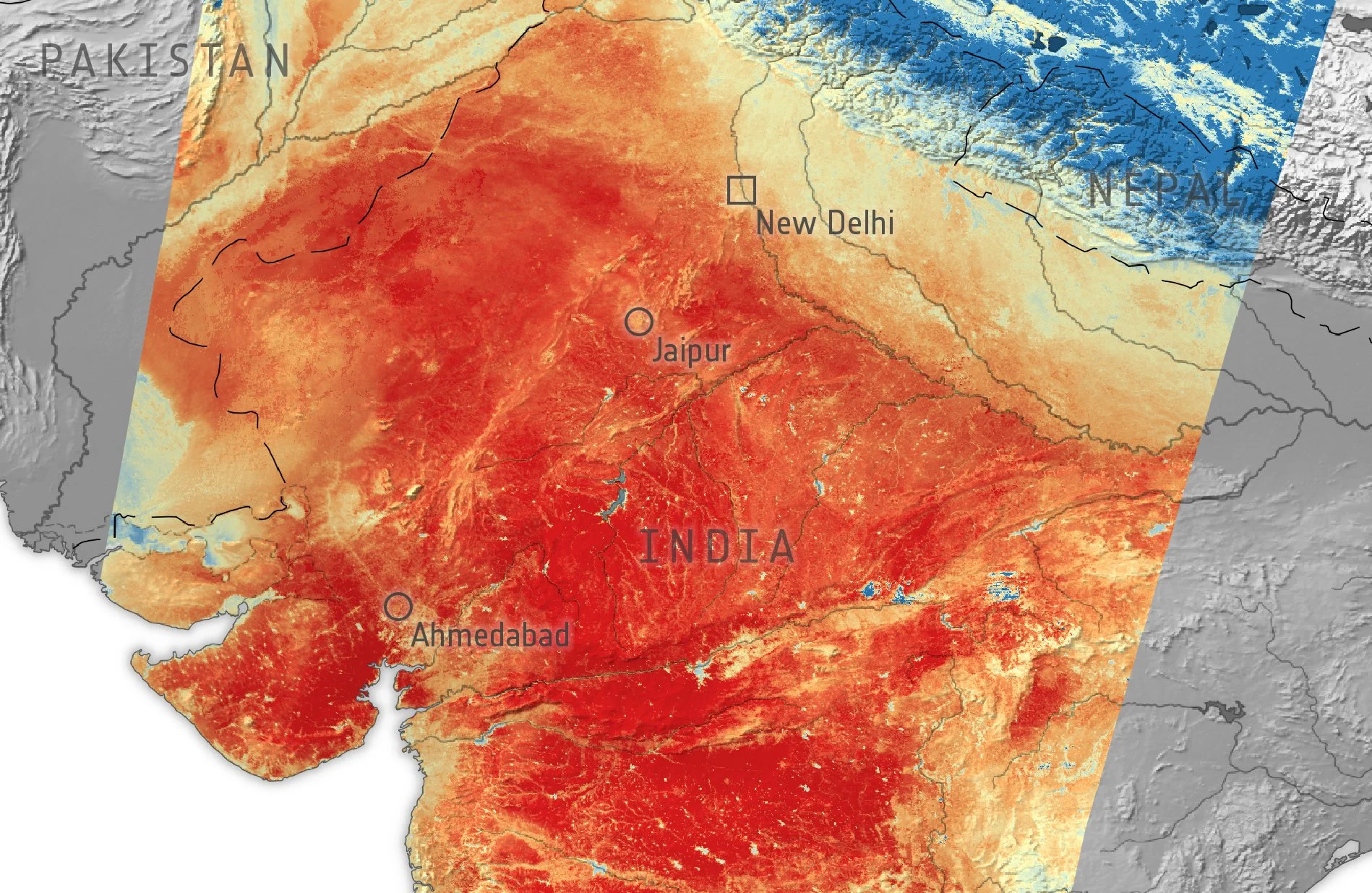Record Heat in India Puts New Pressure on Emergency Medicine
By Wasil Rasool Sheikh, Ankur Verma, Sanjay Jaiswal, Amit Vishen, Rinkey Ahuja, Abbas Ali Khatai, Nilesh Prasad, Pooja Batra
Department of Emergency Medicine, Max Super Specialty Hospital, Patparganj, New Delhi
An extreme heat wave affected much of Western North America from late June through mid-July 2021. The death toll exceeded 1,400 people and at least 808 died in western Canada. The 2018 wildfire season went on to also break records as the deadliest and most destructive season on record in California. In 2020, five of the six largest fires on record burned in California and Oregon saw historic levels of wildfire spread and damage. Rise in average global temperatures have led to a worrying trend of no rain for long periods and then a sudden bout of excessive rainfall, causing extreme weather events, particularly floods which take lives, destroy homes and cost millions in damage. In August 2018 flooding in Kerala killed some 483 people, the worst such event in a century.
There is evidence that climate change is causing increase in extreme weather events as well as severity and frequency of natural disasters. Deforestation is also adding to the environmental instability and contributing to global warming and climate change. Heat waves are projected to increase in number, intensity and duration over the most land area. Heat wave is a period of abnormally high temperatures, more than the normal maximum temperature that occurs during the pre-monsoon (April to June) summer season. It is also called a “silent disaster” as it develops slowly and kills and injures humans and animals nationwide. Higher daily peak temperatures of longer duration and more intense heat waves are becoming increasingly frequent globally due to climate change. It is expected that extreme heat waves will become more common worldwide because of rising average global temperature. Since the beginning of the 21st century, this has increased by nearly a degree centigrade. Further, high humidity compounds the effects of the temperatures being felt by human beings.
Extreme Heat in India
India, with approximately 1.4 billion people, is the second most populous country in the world. It is also among the most disaster-prone countries of the world. Today, India is feeling the impact of climate change in terms of increased instances of heat wave with each passing year. This year, India is also experiencing an increase in the annual mean, minimum, and maximum temperatures since the beginning of the 20th century and in recent decades. India has been considerably affected by hot extremes that killed thousands of people in the years 1998, 2010, 2013, and 2015. The extreme temperatures combined with high humidity and resultant atmospheric conditions adversely affect people living in these regions leading to physiological stress, sometimes even death. This unusual and uncomfortable hot weather can impact human and animal health and also cause major disruption in community infrastructure such as power supply, public transport and other essential services.
Extreme heat can lead to dangerous, even deadly, consequences, including heat stress and heatstroke. Experts have been warning that the rising temperatures will lead to more floods, heat waves, storms, rising sea levels and unpredictable farm yields. There has been an increasing trend of heat wave in India over the past several years whereby several cities in India have been severely affected. Heat wave killed about 3000 people in 1998 and more than 2000 in 2002. Heat wave caused over 2000 deaths in 1998 in Odisha and more than 1200 deaths in 2002 in southern India. More than 2400 people died in the heat wave of 2015. Heat wave also caused death of cattle and wildlife besides affecting animals in various zoos in India.
Since the middle of the twentieth century, India has witnessed a rise in average temperature; a decrease in monsoon precipitation; a rise in extreme temperature and rainfall events, droughts, and sea levels; and an increase in the intensity of severe cyclones, alongside other changes in the monsoon system. There is compelling scientific evidence that human activities have influenced these changes in regional climate.
A survey of climate records published in 2020 revealed global wet bulb temperatures above 31 C and 33 C. South Asian countries have already recorded wet bulb temperatures above 35 C which includes Pakistan and North India. Human physiological ability to shed heat is stretched thin at the upper limit of 35 C and can lead to adverse health impacts.
Heat waves are common in India in the spring and early summer, especially in May, which is typically the hottest month. But they are often relieved by the onset of the monsoon season from late May through September. The number of spring heat waves has been increasing, according to India’s Ministry of Earth Sciences, as 12 of the country’s 15 warmest years on record have occurred since 2006. A June 2015 heat wave killed more than 2,000 people. The effects of the heat wave include heat-related illnesses, poor air quality, little rainfall, and reduced crop yields. Additionally, power demand has spiked and coal inventories have dropped, leaving the country with its worst electricity shortage in more than six years.
India’s 2022 Heat Wave
What’s particularly notable is the early onset of the heat wave. The expected timing of a heat wave like this is May and June. India has been suffering under record-breaking heat for the last couple months. Last month was the third-hottest April the country has seen over the past 122 years. An intense heat wave in mid- and late April 2022 brought temperatures 4.5 to 8.5°C (8 to 15°F) above normal in east, central, and northwest India, just weeks after the country recorded its hottest March since the country’ meteorological department began keeping records more than 120 years ago. The average maximum temperature recorded in March was 33.10 degrees Celsius (91.6 degrees Fahrenheit), which is the highest average maximum in the past 122 years. It’s almost two degrees hotter than average maximum temperature in March between the years 1981 and 2010, which was 31.24 degrees Celsius (88.2 degrees Fahrenheit). In the first week of May 2022, multiple regions of India have already been edging close to critical wet-bulb temperatures according to the Indian Meteorological Department.
It’s also affecting a notably large geographic region. Power outages across India due to coal shortage has reduced the capacity to deal with the heat wave. The increased demand of air conditioning is not being able to be met and power outages across majority of the states is making life very difficult.
Importantly, the adverse impacts of heat wave are preventable by educating the public on the preventive actions, reporting early to health facilities and timely diagnosis and treatment. With the impact of social media and early warning systems, impacts of heat wave on human health can be mitigated. Early recognition and arrival to a healthcare facility can help alleviate things like heat cramps, heat exhaustion and heat strokes. India rolled out the National Action Plan on Heat related Illnesses in July 2021 which provided insights for hospital preparedness.
Heat Waves and the Emergency Department
Till the first week of May, approximately 26 deaths due to heat-related illness have been reported from India but this could be grossly under reported. Emergency Departments in the hospitals need to be prepared for heat related illness. They need dedicated beds in cooler areas of the department; proper air conditioning, fans and coolers. They need ice packs, cold intravenous fluids, and cooling blankets. Antipyretics, both oral and parenteral, dextrose, working thermometers and other monitoring equipment, should be stocked up. Advanced emergency medicine teams with expertise in airway management techniques, critical care and pre-hospital care should be identified. Ambulances with ice packs and cold saline should also be prepared. One of the mainstays of treatment of heat-related illness is rapid cooling of the body and bringing the temperature down to at least 38C. An emergency department should have the resources for the same as mentioned above. Urban centers in big cities would usually have better resources to tackle heat-related illnesses in terms of manpower and skilled workers. India has a lot of primary health centers and district health centers where the staff might get overwhelmed. Strengthening the resources in terms of infrastructure (cool areas, fans, air conditioning,etc.), medical equipment and manpower before the hot months begin would be prudent.
The increased occurrences and severity of heat-wave is a wake-up call for all agencies to take necessary action for prevention, preparedness and community outreach to save the lives of the general public, livestock and wild life.
The biggest myth in the world today is the myth that there is no climate change. We will only be fooling ourselves if we believe that the global weather phenomenon in recent times is natural. The situation cannot be ignored and for once, ignorance will not be bliss.
References
Ingwersen, Julie (July 12, 2021). "'Wither away and die:' U.S. Pacific Northwest heat wave bakes wheat, fruit crops". Reuters. Retrieved July 15, 2021
Global Catastrophe Recap September 2021 (PDF) (Report). Aon Benfield. October 12, 2021. p. 13. Retrieved October 12, 2021.
"483 dead in Kerala floods and landslides, losses more than annual plan outlay: Pinarayi Vijayan". 30 August 2018. Retrieved 2 September 2018.
Kothawale, D. R. & Rupa Kumar, K. On the recent changes in surface temperature trends over India. Geophys. Res. Lett. 32
Rai, A., Joshi, M. K. & Pandey, A. C. Variations in diurnal temperature range over India: Under global warming scenario. J. Geophys. Res.-Atmos. 117
Vinnarasi, R., Dhanya, C. T., Chakravorty, A. & AghaKouchak, A. Unravelling Diurnal Asymmetry of Surface Temperature in Different Climate Zones. Sci. Rep. 7, 7350
Pai, D. S., Smitha, A. & Ramanathan, A. N. Long term climatology and trends of heat waves over India during the recent 50 years (1961–2010). Mausam 64, 585–604 (2013)
Mukherjee, S. & Mishra, V. A sixfold rise in concurrent day and night-time heatwaves in India under 2 °C warming. Sci. Rep. 8, 16922
Mazdiyasni, O. et al. Increasing probability of mortality during Indian heat waves. Sci. Adv. 3, e1700066
Raymond, C., Matthews, T., & Horton, R. M. (2020). The emergence of heat and humidity too severe for human tolerance. Science Advances, 6(19), eaaw1838.
http://imdgeospatial.imd.gov.in/Min_Temperature/#4.4/25.363/78.508
https://ncdc.gov.in/WriteReadData/linkimages/NationActionplanonHeatRelatedIllnesses.pdf
https://www.reuters.com/world/india/extreme-heat-kills-least-25-indias-maharashtra-state-2022-05-03/
Smith JE. Cooling methods used in the treatment of exertional heat illness. British Journal of Sports Medicine. 2005;39(8):503–507.







